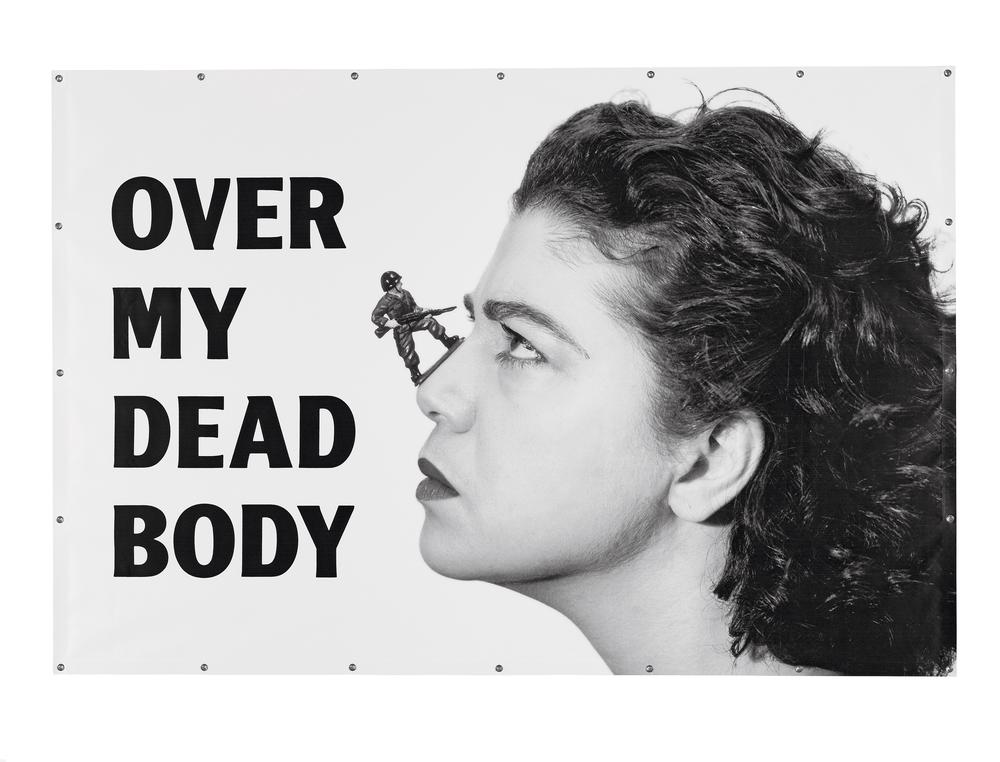Mona Hatoum. Over my Dead Body
The body is central to Mona Hatoum’s work. While in early performances and works she used her own body—for example, her billboard Over my Dead Body (1988) features the artist’s profile, a tiny toy soldier positioned on her nose to point his gun at her temple—her installation works implicate the viewer in a physical experience. The gigantic scale of her sculptures induce a kind of Alice in Wonderland effect,1 overwhelming the viewer’s space, while sleek materials like marble and glass seduce. “You first experience an artwork physically,” says the artist.2 Meanings and associations emerge as the form of an oversized metal grater comes to resemble a bed, for example, or the fragility of glass playground swings pose potential destruction. Hatoum’s intention “to create a situation where reality itself becomes a questionable point”3 manifests in physical sensations.
Sheena Wagstaff, “Uncharted Territory: New Perspectives in the Art of Mona Hatoum,” in Mona Hatoum: The Entire World as a Foreign Land (London: Tate Gallery, 2000), 27. ↩︎
Sheena Wagstaff, “Uncharted Territory: New Perspectives in the Art of Mona Hatoum,” in Mona Hatoum: The Entire World as a Foreign Land (London: Tate Gallery, 2000), 28. ↩︎
Mona Hatoum, interview with Janine Antoni, BOMB, no. 63 (Spring 1998), available at bombmagazine.org/articles/mona-hatoum/. ↩︎
